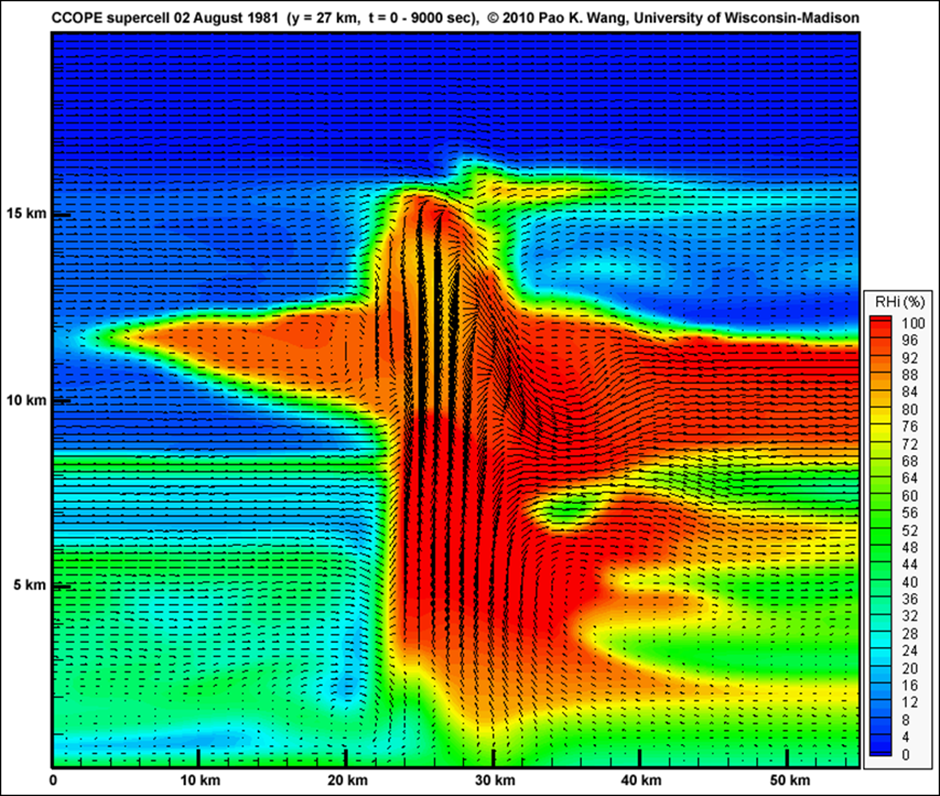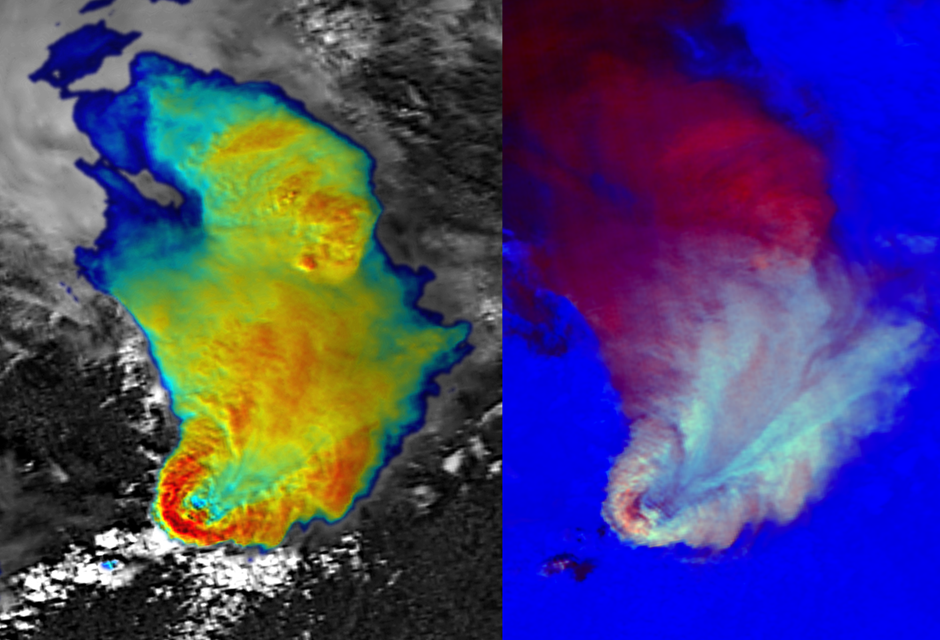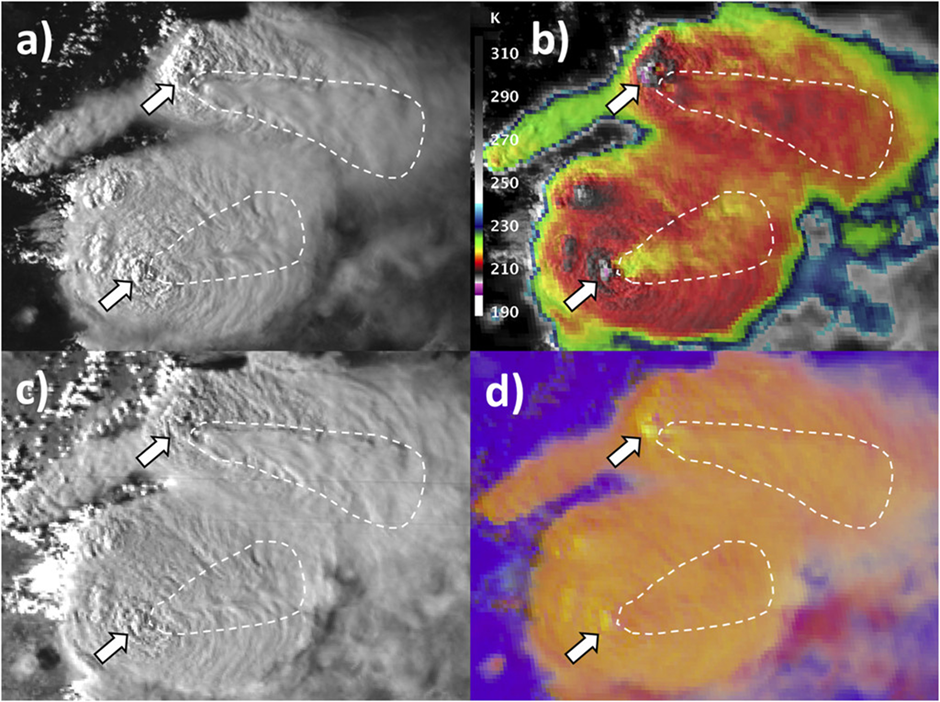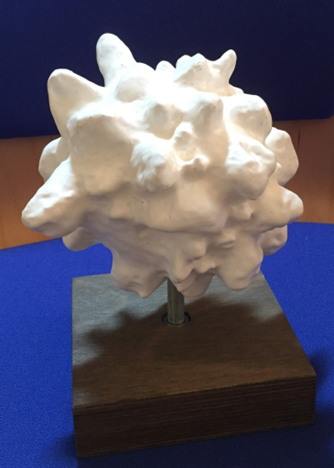The Nikolai Dotzek Award goes to three meteorologists with focus on satellite studies. The most prestigious award in the global severe weather research community is presented every second year in the memory of ESSL’s founding father, Dr. Nikolai Dotzek, for an outstanding contribution to the science of severe storms.
As the new generation of satellites in Europe, the United States, and Japan have been launched, their increased capabilities in terms of available channels and resolution will allow for better nowcasting of severe convective storms. It is a good time to acknowledge those who have contributed significantly to our understanding of the processes that occur on top of the convective storms, how they relate to storm severity, and how they can be operationally detected. ESSL presents the 2023 Nikolai Dotzek Award to three scientists who have strongly pushed satellite meteorology forward.
Pao Wang
The first awardee is Prof. Pao-Kuan Wang, who has used very high-resolution cloud models to simulate the processes at the top of convective storms. Simulations showed that overshooting tops act as obstacles to the anvil-relative wind. Thus, most of the storm top features that we observe from a satellite, such as cold rings, cold-Us, above-anvil cirrus plumes, storm-top gravity waves or ship wave patterns result from the interaction between overshooting tops and the ambient flow. Wang has also shown that some of these features result from internal gravity wave breaking processes, consequently contributing to lower stratospheric moistening. Wang was, until recently, director of the Research Center for Environmental Changes of the Academia Sinica and formerly professor at the University of Wisconsin in Madison.

Martin Setvák
The second awardee is Dr. Martin Setvák, who in the late 1980’s described various forms of increased 3.7 micron cloud top reflectivity of convective storms and discussed its possible link to storm severity and updraft strength. Later he elaborated this concept with Dr. Charles A. Doswell. Together with Dr. Vincenzo Levizanni, Setvák formulated a concept of above-anvil cirrus plumes above convective storms on satellite imagery. He also contributed to the categorization of various storm-top phenomena, such as cold rings, closely collaborating on these topics with Prof. Pao K. Wang. Setvák is the father of the so-called “sandwich imagery”, a combination of infrared and visible channels, which is now in widespread use across the world. Martin Setvák has formally retired but still works part-time at the Czech Hydrometeorological Institute (CHMI).

Kris Bedka
The third awardee is Kristopher Bedka, who together with his team made significant strides toward the automation of the detection of both overshooting tops and above-anvil cirrus plumes. Using large records of these phenomena and their properties, Bedka investigated their statistical relationships with severe weather beneath them. His recent work concentrated on the automatic detection of high ice water content in deep convective storms, adversely impacting aircraft engine and air probe performance. He demonstrated the utility of 1-min super rapid scanning for analysis of satellite-observed cloud properties. His ongoing work expands towards wind profiling with an airborne doppler aerosol lidar – to only mention one of several fields of activity – and offers great promises for nowcasting and improving severe storms climatologies. Kris Bedka is affiliated with the NASA Langley Research Center.

The Nikolai Dotzek Award trophy represents a massive hailstone. The prize money is 1000 EUR together with an invitation to the European Conference on Severe Storms (ECSS). The award was instigated by the European Severe Storms Laboratory (ESSL) in 2011. The handing over of the award trophy usually crowns the dinner of the ECSS conference and will take place this year in Bucharest, Romania, on the 10th of May.

The ESSL aims to contribute to the preparedness of European society for the impacts of severe storms by advancing scientific understanding, building human capacity, and fostering cooperation within Europe in this field.
ESSL provides training to forecasters, scientists, and policymakers on topics related to convective weather. ESSL participates in research projects and organizes the European Conference on Severe Storms to improve and stimulate the exchange of knowledge on severe convection. ESSL aims to establish and maintain close relationships with national weather services and research institutes to strengthen pan-European collaborations. ESSL maintains the European Severe Weather Database, to support research based on observations of severe convective weather or any related impact.
You can download a PDF document of this content here.
More information on the Nikolai Dotzek Award can be found here.
